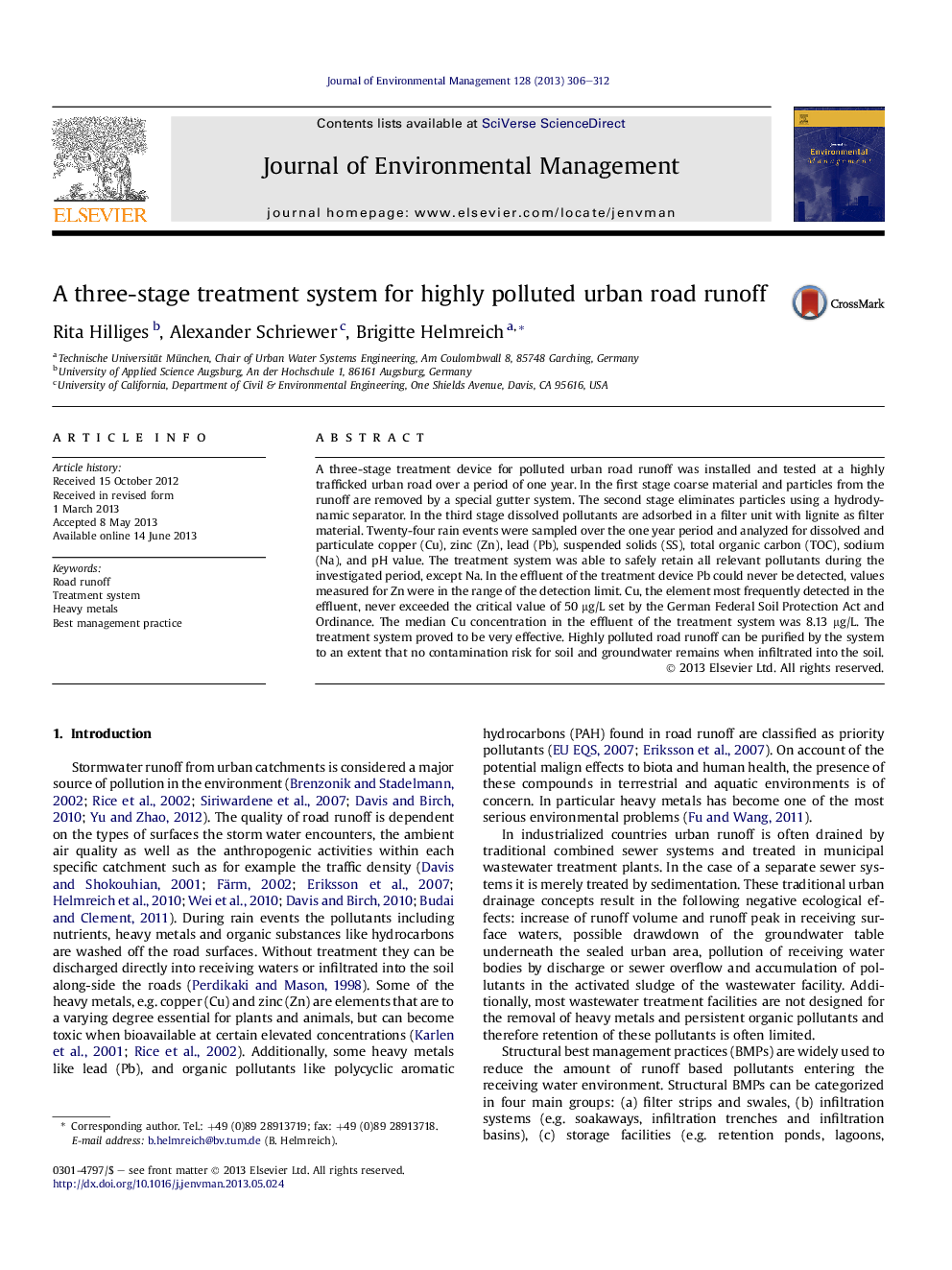| Article ID | Journal | Published Year | Pages | File Type |
|---|---|---|---|---|
| 7484306 | Journal of Environmental Management | 2013 | 7 Pages |
Abstract
A three-stage treatment device for polluted urban road runoff was installed and tested at a highly trafficked urban road over a period of one year. In the first stage coarse material and particles from the runoff are removed by a special gutter system. The second stage eliminates particles using a hydrodynamic separator. In the third stage dissolved pollutants are adsorbed in a filter unit with lignite as filter material. Twenty-four rain events were sampled over the one year period and analyzed for dissolved and particulate copper (Cu), zinc (Zn), lead (Pb), suspended solids (SS), total organic carbon (TOC), sodium (Na), and pH value. The treatment system was able to safely retain all relevant pollutants during the investigated period, except Na. In the effluent of the treatment device Pb could never be detected, values measured for Zn were in the range of the detection limit. Cu, the element most frequently detected in the effluent, never exceeded the critical value of 50 μg/L set by the German Federal Soil Protection Act and Ordinance. The median Cu concentration in the effluent of the treatment system was 8.13 μg/L. The treatment system proved to be very effective. Highly polluted road runoff can be purified by the system to an extent that no contamination risk for soil and groundwater remains when infiltrated into the soil.
Related Topics
Physical Sciences and Engineering
Energy
Renewable Energy, Sustainability and the Environment
Authors
Rita Hilliges, Alexander Schriewer, Brigitte Helmreich,
